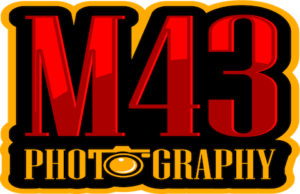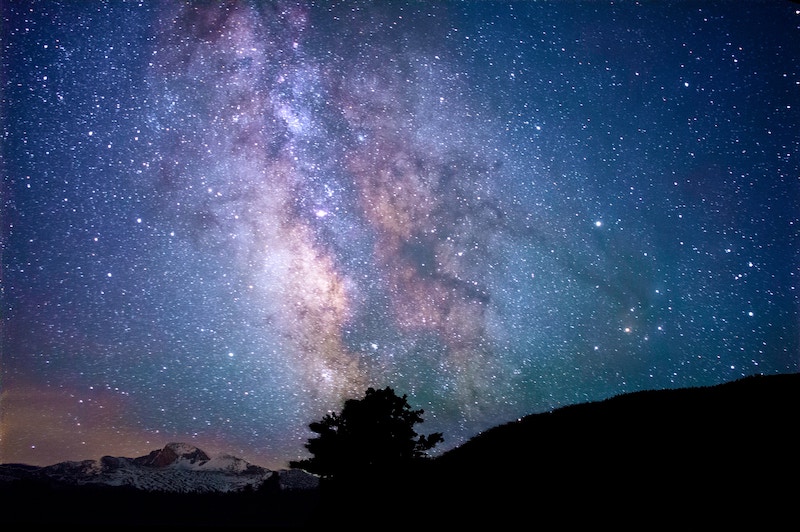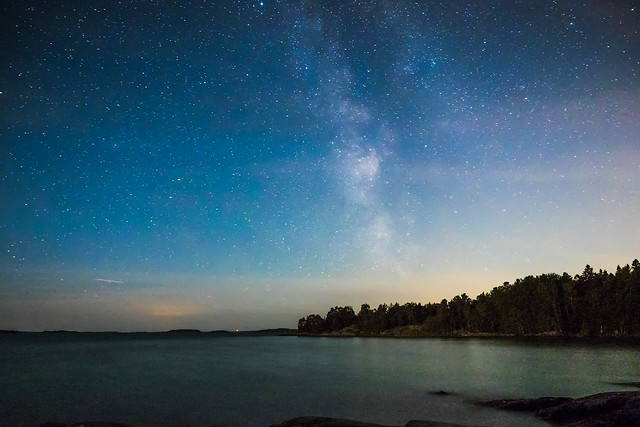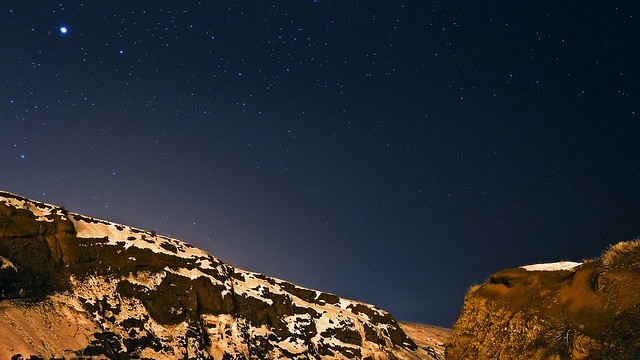Shooting astrophotography with Micro Four Thirds cameras could be challenging.
cameras could be challenging.
The smaller sensor (compared to a Full Frame or APS-C) can leave more noise and reduce the quality and detail of the photo. But, is that be true in 2019?
First, let’s talk about taking photos of star trails, shooting the Milky Way and explain what camera gear and settings are required for astrophotography!
Have you ever been to a place outside the city and notice how bright the stars are?
To me, it happened a while ago, when I took a trip to Glacier National Park in North West Montana.
Montana is called “Big Sky Country,” and it feels like the sky is so much closer to you than any other place on earth (at least from the places I’ve been).
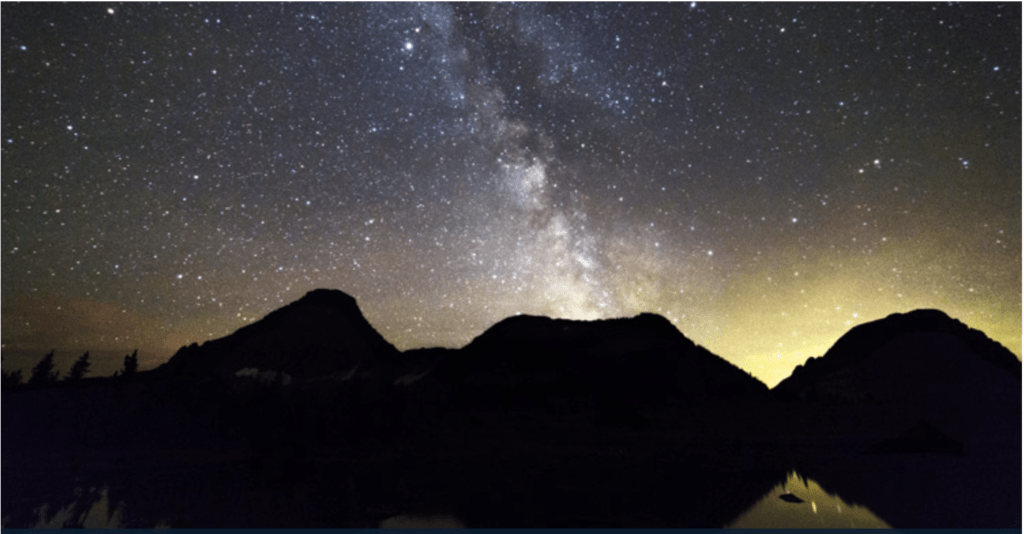
That night, the sky was so clear. You could see so many stars; they were countless!
This moment was when I started digging into astrophotography. I’ve seen numerous images online and on Instagram, but I’ve never thought about how it is possible to capture those magnificent images!
Then I questioned myself, what techniques and camera gear do I need to have to get such results?
The Cameras
Since the release of the Olympus OM-D E-M1X back in February 2019, significant improvements have been made in the micro four-thirds world.
The new flagship model E-M1X is the successor of the OM-D E-M1 Mark II and can take stunning night sky images combined with Pro lenses.
Below you will find a few specs of both cameras:
Olympus OM-D EM1X (Newest Model)
- 20.4MP Micro 4/3 Live Mos Image Sensor (up to 80MP in High-Res Mode)
- Up to 7.5 stops Image Stabilization (World’s Best)
- Aspect ratio 4:3
- ISO 64-25600
- Maximum Shutter Speed 1/32000
- 4K UHD Video at 30p
- 121 Cross-Type Phase-Detection Points
- EVF
- Cost US$3000
Olympus OM-D E-M1 Mark II
- 20.4MP Micro 4/3 Live Mos Image Sensor (up to 80MP in High-Res Mode)
- Up to 5.5 stops Image Stabilization (World’s Best)
- Aspect ratio 4:3
- ISO 64-25600
- Maximum Shutter Speed 1/32000
- 4K UHD Video at 30p
- 121 Cross-Type Phase-Detection Points
- EVF
- Cost US$1500
What makes the new Olympus OM-D E-M1X stand out is the unique image stabilization system combined with the 12-100mm M.Zuiko lens can go up to 7.5 stops!
In astrophotography though, you won’t necessarily need image stabilization. Here’s what you need to know about the settings.
The Settings
When you want to take long-exposure shots of the night sky, you need to understand a simple rule:
Divide 500 by the focal length of your lens (in Full Frame terms)
The ISO should be between 1600 – 3200 depending on the location, lighting, etc.
- Focusing should be in Manual and the distance in infinity
- Use Focus Peaking and Manual Focus Assist
- Always shoot RAW
Laith Stevens is sharing his astrophoto using the Olympus OMD E-M1 Mark II with the 7-14mm f/2.8 lens. As you can see here, he has captured stars and jet trails.
Wide-open at 7mm (14mm in a Full Frame body) and with a 10-sec exposure, the image looks noise-free at ISO 200. You might notice some noise at the top of the image, but that’s insignificant compared to the whole photo.
Of course, noise reduction can be applied in post-process – photo editing. Lightroom and Photoshop have a few unique features to eliminate noise and create a better quality image.
Mike Hendren has captured the Milky Way from New Mexico. The camera is the same Olympus OM-D E-M1 Mark II with the M.Zuiko ED 8mm f/1.8 Fisheye Pro lens.
Here you can notice the clarity of the photo even if he is shooting with the widest aperture f/1.8 and the widest angle 8mm.
Not all lenses can produce a clear image corner to corner at the widest aperture. In this one, M.Zuiko delivers excellent sharpness at ISO 1600 and 20 sec of exposure.
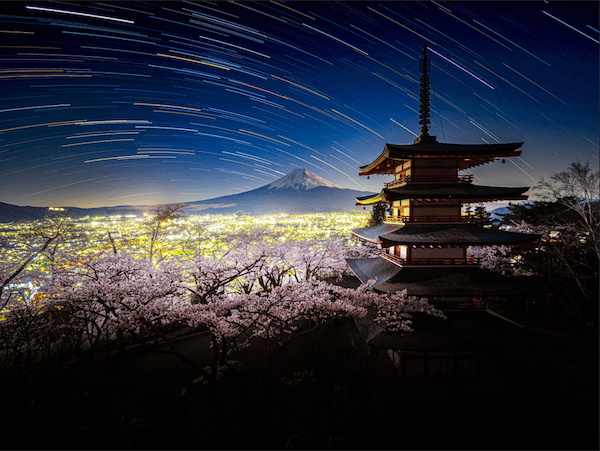
Takuma Kimura shows off the newest Olympus OM-D E-M1X with one of the best photos and locations in the world for landscape photographers, i.e., Mt. Fuji in Japan.
The photographer uses the new OM-D E-M1X with the M.Zuiko 7-14mm f/2.8 and shoots at f/2.8 and the widest angle at 7mm. The critical part here is that he uses ISO 400 and leaves the shutter open for 60 whole seconds!
Despite the light pollution in the city, the image looks very clear and sharp without noticeable noise.
Astrophotography for other Micro 4/3 Cameras
Not everyone can spend over $1500 to buy the best micro four-thirds camera and lenses. What happens with the rest photographers, beginners or enthusiasts, who want to capture the night sky with their micro four-thirds cameras?
To me, you don’t need the best camera gear to take photos at night. I understand astrophotography requires proper equipment, but anyone can take a decent photo if they put more effort and increase their photography skills.
This photo was taken with the Olympus OM-D E-M5 and M.Zuiko 9-18mm f4-5.6. It’s a decent camera with a 16MP image sensor. If you zoom in you will notice some noise, but that’s fine. Not every image has to be noise-free.
In this image, the aperture was set to f/4; the angle was at 9mm, ISO at 200 and shutter speed at 921 sec. The image looks pretty good for an f/4 aperture.
The Olympus OM-D E-M10 is another excellent micro four-thirds camera with a 16MP live MOS image sensor. Sedat Yıldız takes this photo in Turkey with the 14-42mm f/3.5-5.6 II R lens.
He also used the widest aperture and focal length at ISO 800 and 15-sec exposure.
The stars look pretty good. Despite the noise that occurs between the landscape and the night sky, the rest of the image is pretty clear and in good quality.
This setup costs a little less than US$700. Pretty amazing, isn’t it?
Verdict
The more you can spend on camera gear, the better results you will have. That doesn’t mean you can’t have gobsmacking results with less expensive cameras and lenses.
The new Olympus OM-D E-M1X provides outstanding image quality but comes with a price. You will need to spend at least $US4000 to get a decent lens too.
Your second choice is the predecessor of Olympus OM-D E-M1 Mark II. At almost half of the price, you get the same megapixels and image quality.
It might not have the newest features of the E-M1X, but if you get a Pro lens, the difference in image quality will be minimal.
For those who don’t want to spend over US$1000 and need a cheaper option, the Olympus OM-D E-M10 Mark III and E-M5 Mark II are great choices.
Again, combined with a quality lens, you can take fantastic Astro images!
Micro four-thirds cameras can deliver impressive results in astrophotography.
In particular, Olympus is pushing the limits for m43 photography, but Panasonic also is producing very desirable micro 4/3 gear, with a slant to video.
These camera makers are staying up-to-date with the rest of the camera brands like Sony, Canon, Nikon, and Fujifilm. Everyone specializes in something different.
Olympus is trying to develop micro four-thirds cameras with enhanced technologies, new features, and camera sensors.
We should also mention the high-quality lens lineup they have. If it weren’t for the lenses, then all cameras would be worthless.
If you’re looking to get into astrophotography and you want an interchangeable camera system with high built-quality, producing sharp images and outstanding support, Olympus is the brand you’re looking for to achieve this.
Make sure you know what you need, check your budget, and decide which model is the right for you.
Usually, depending on your budget, make sure you spend less on a camera body and more in lenses.
You can get far better images with the best lens and a previous model (i.e., Olympus OMD-M10 Mark II instead of Mark III) than get the latest camera body with a cheap lens.
However, if you have the money, go for it and buy the best camera and lens!
